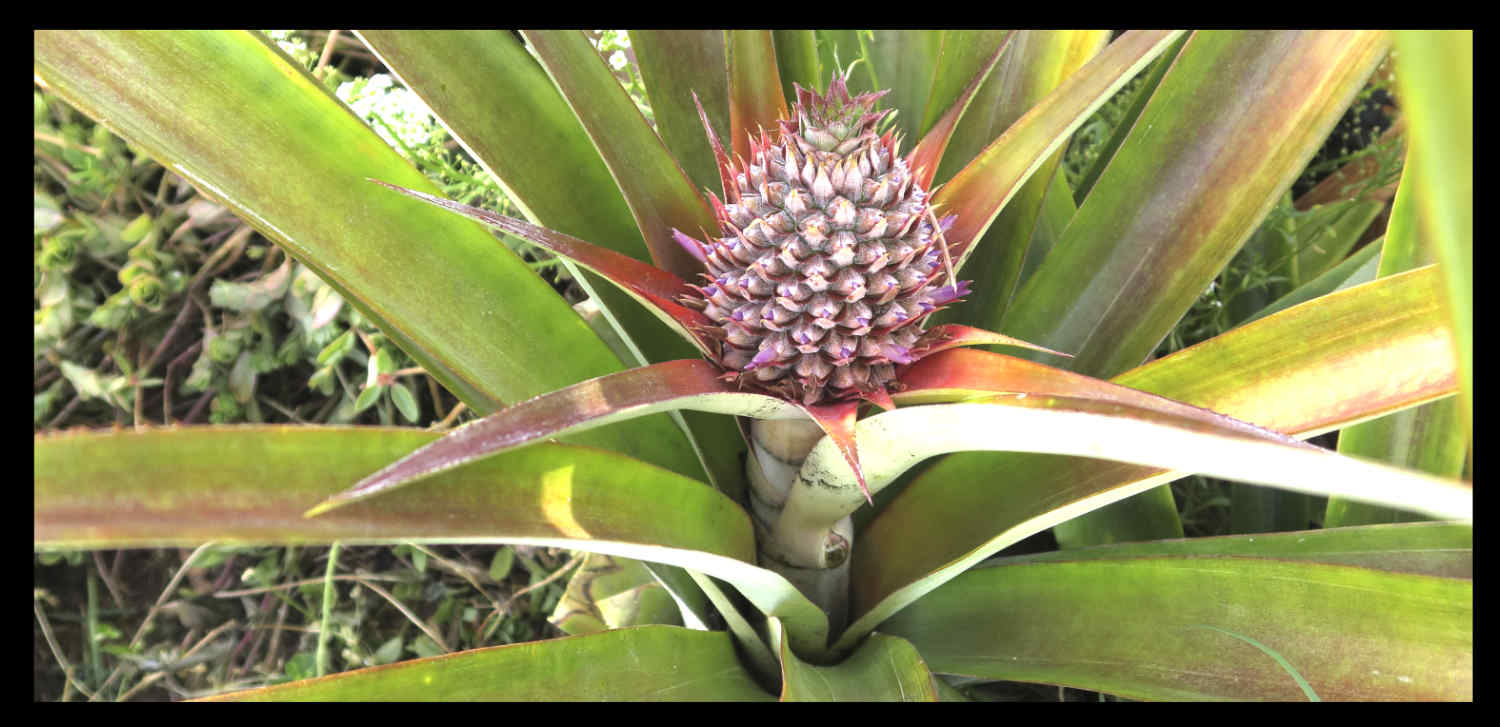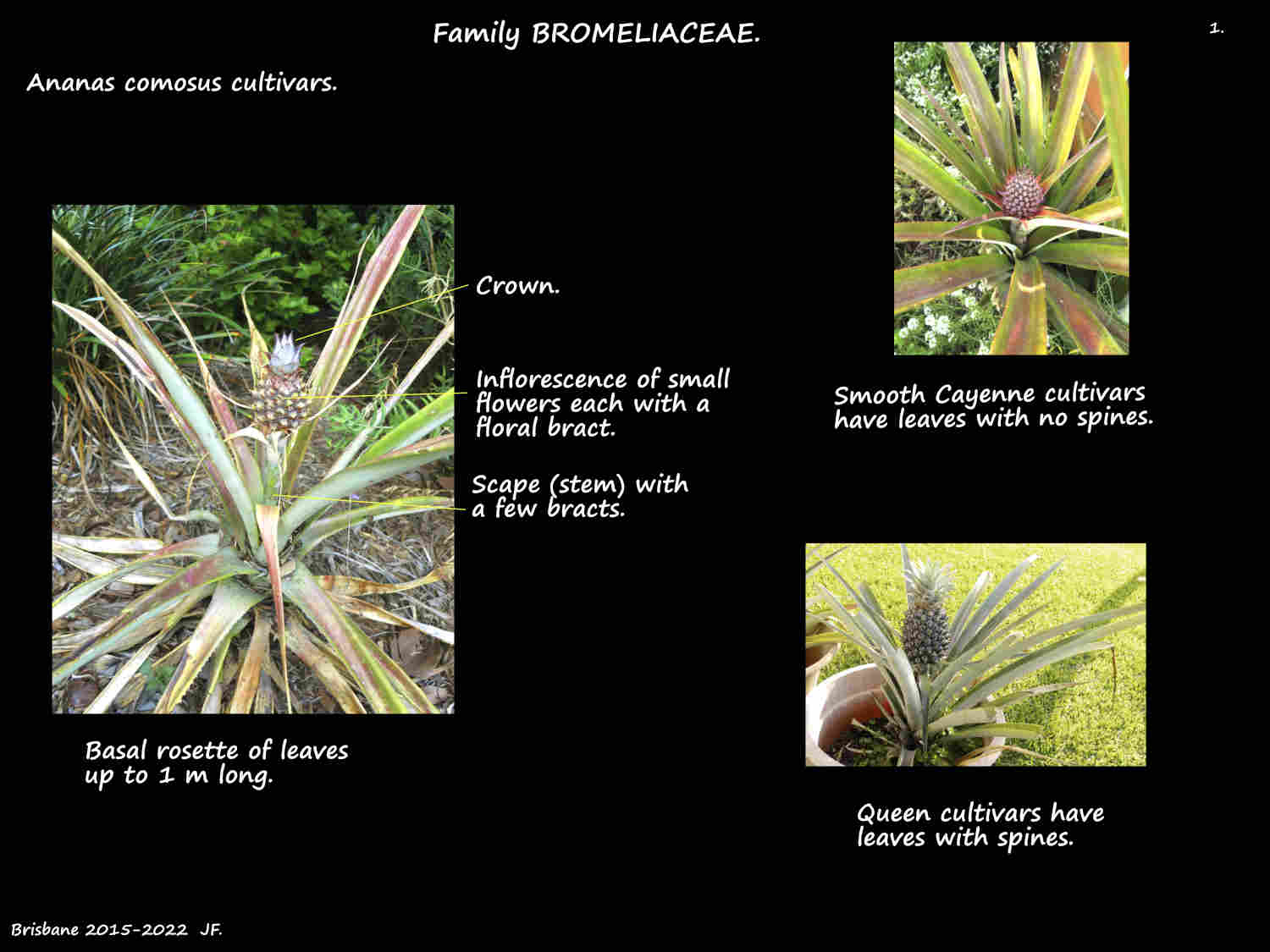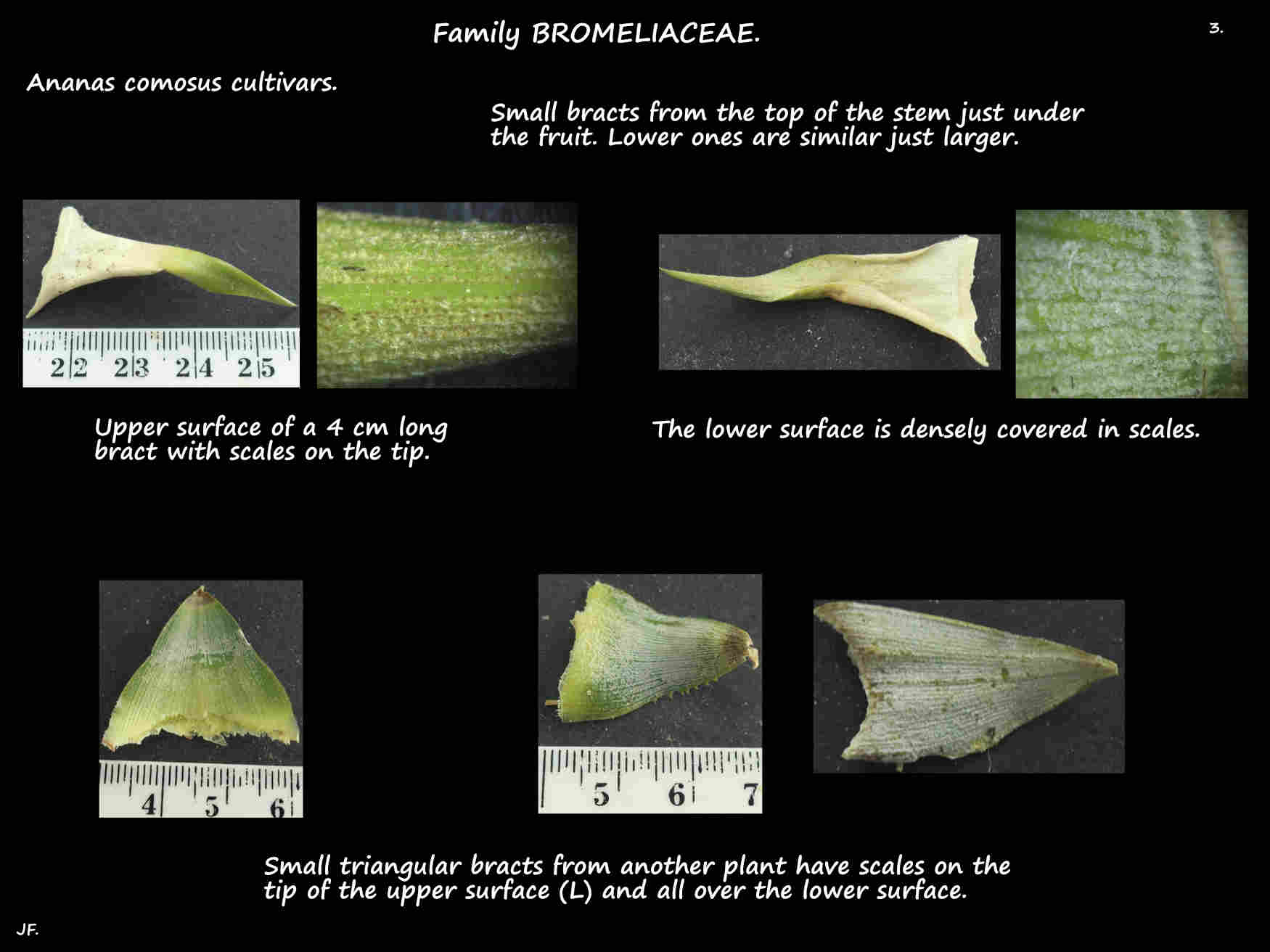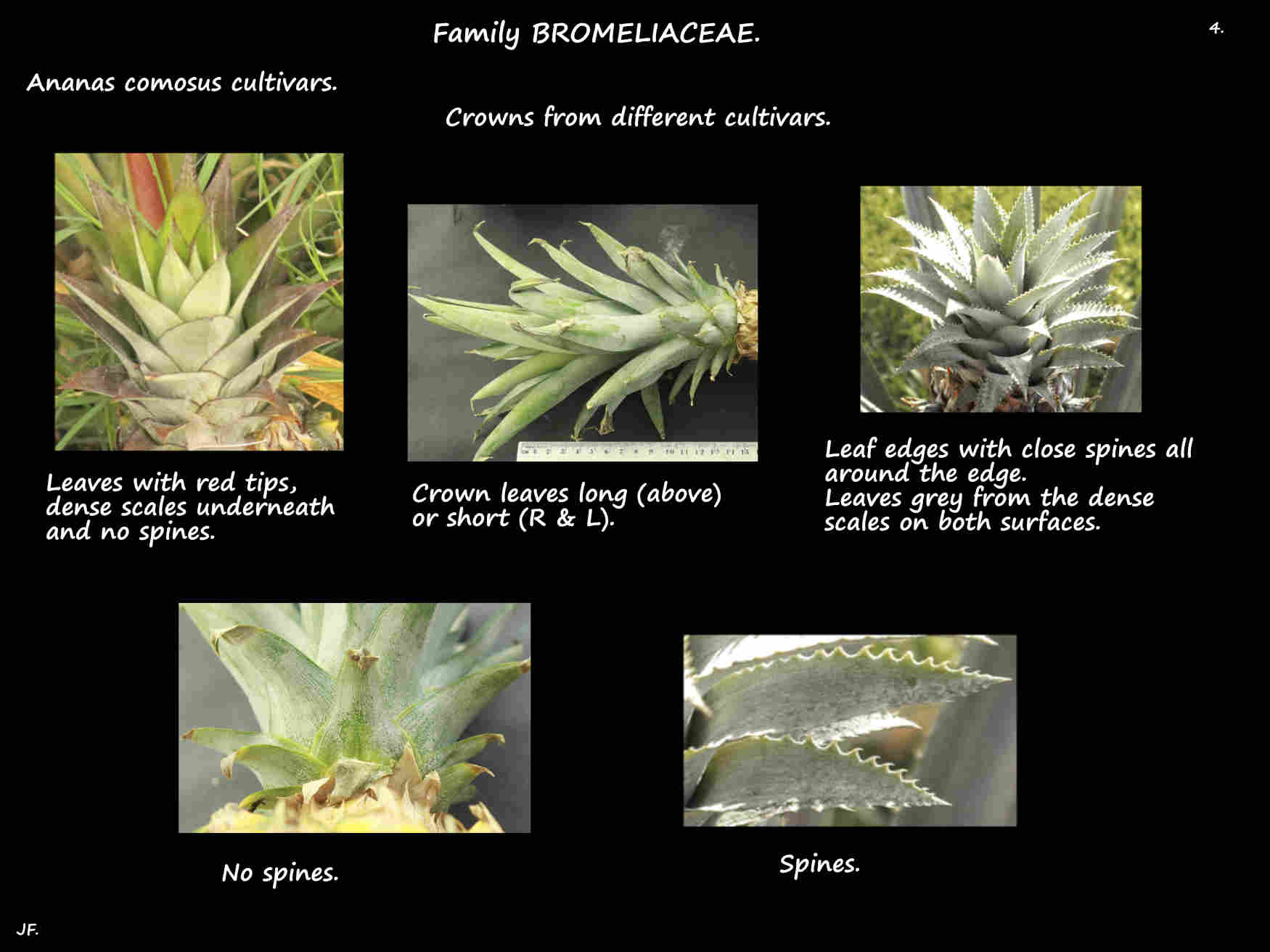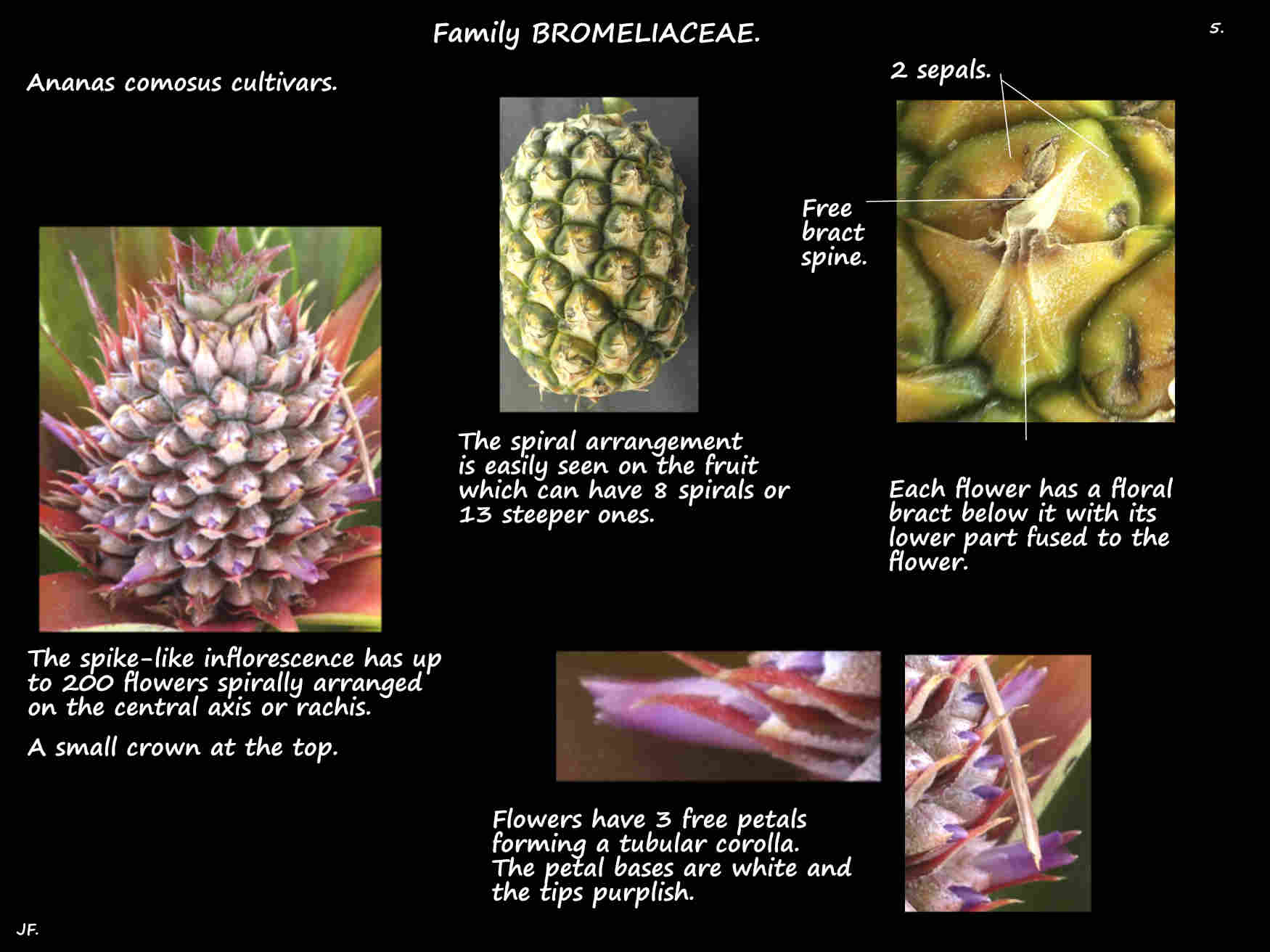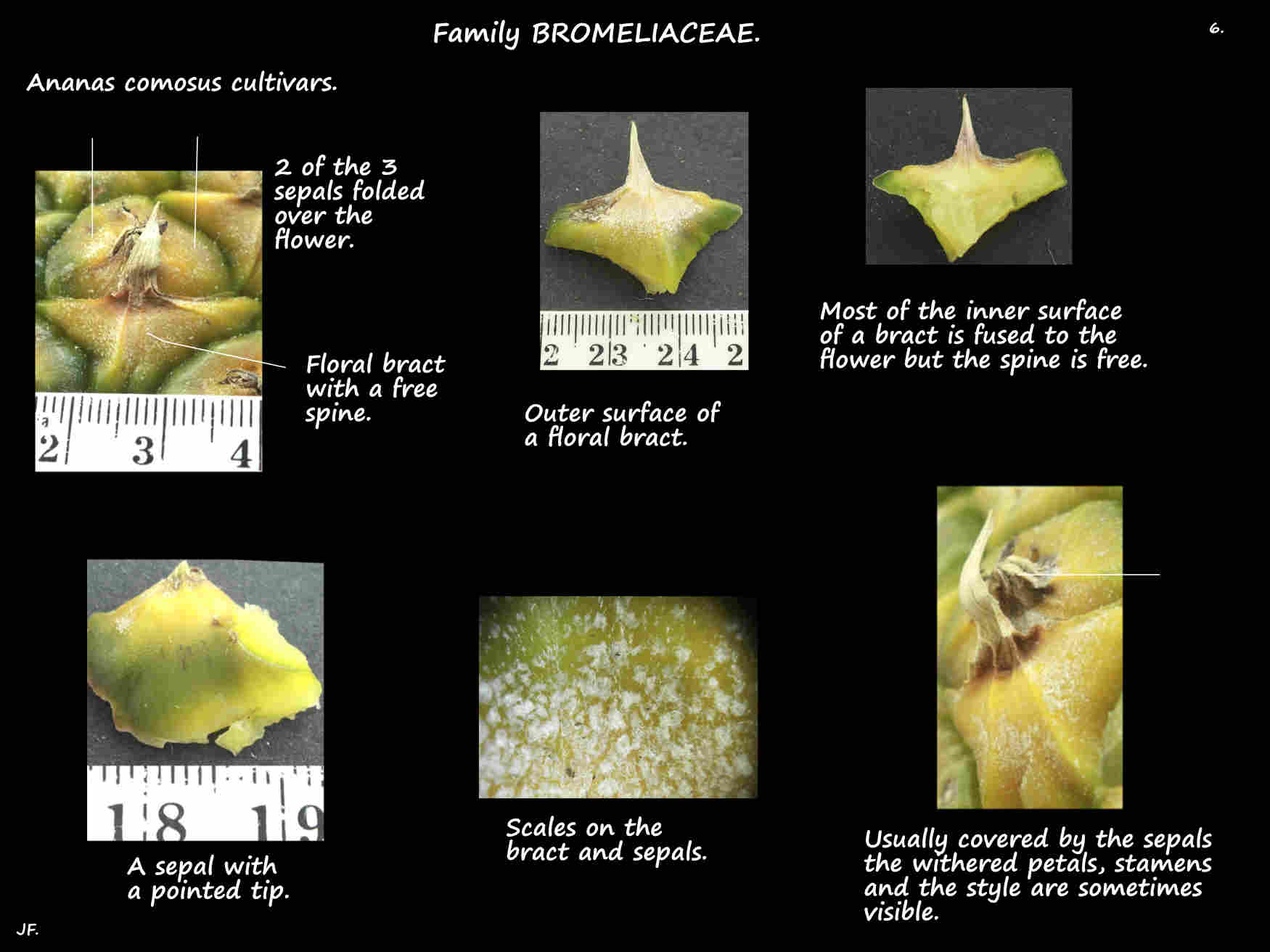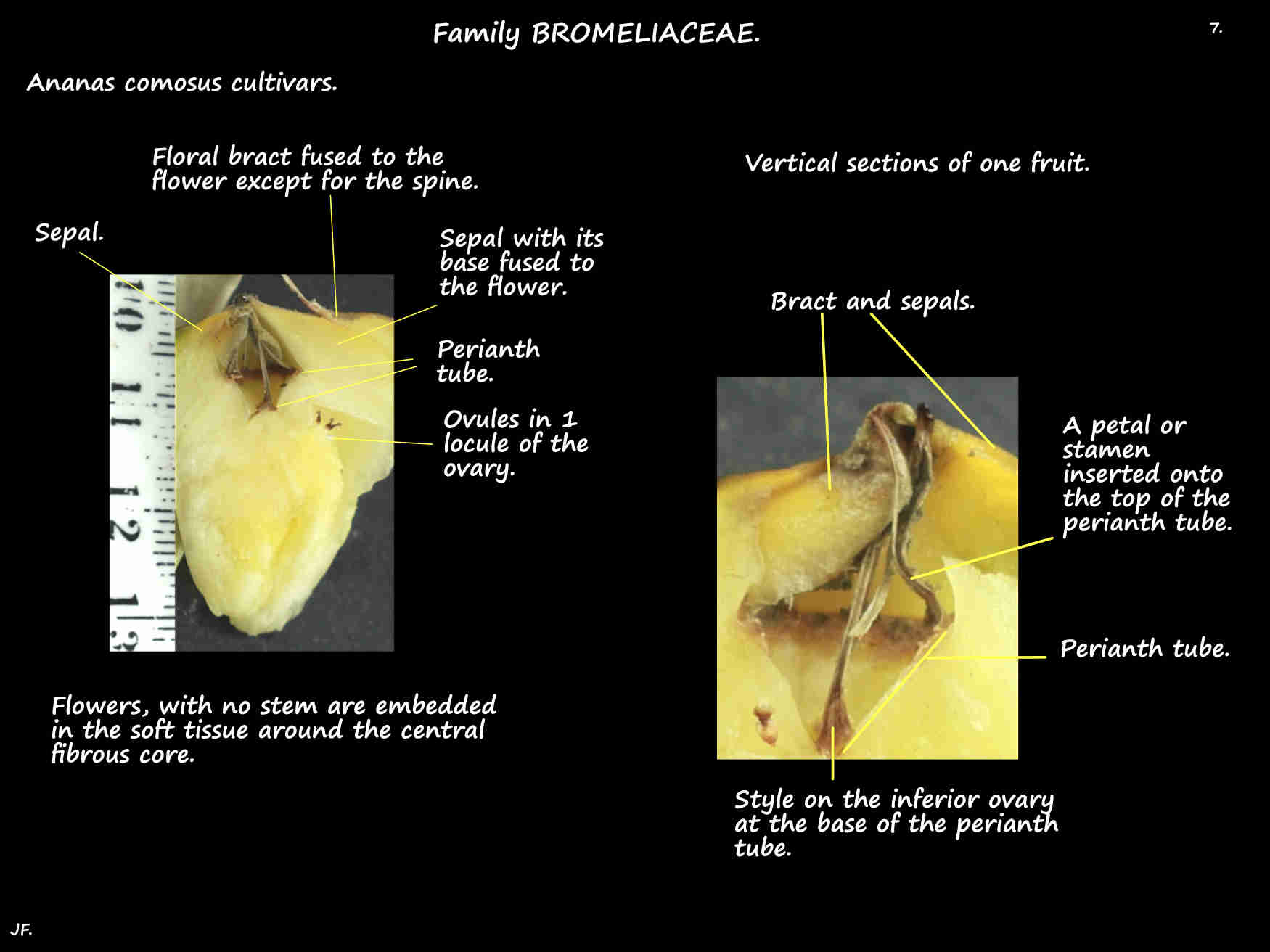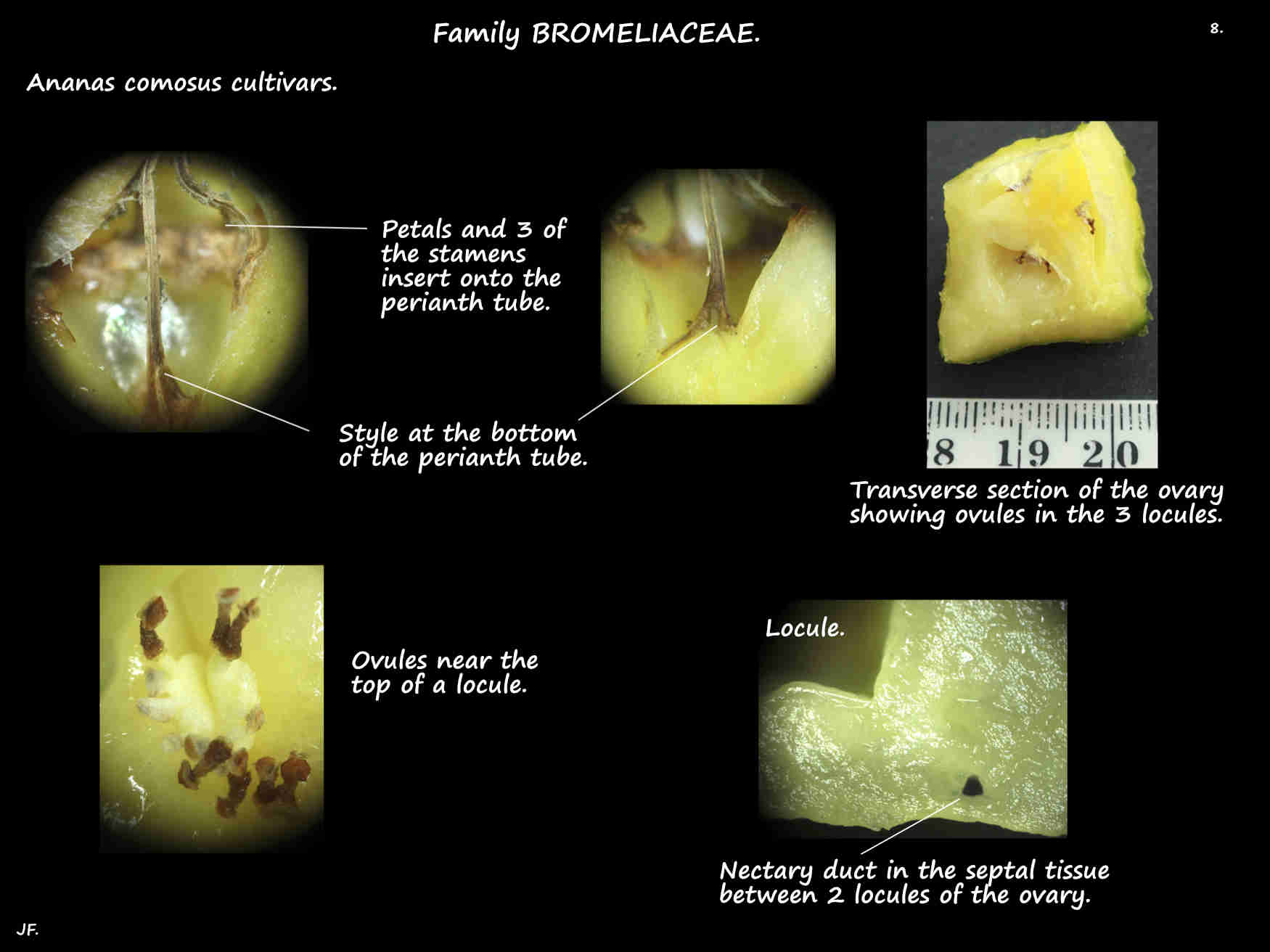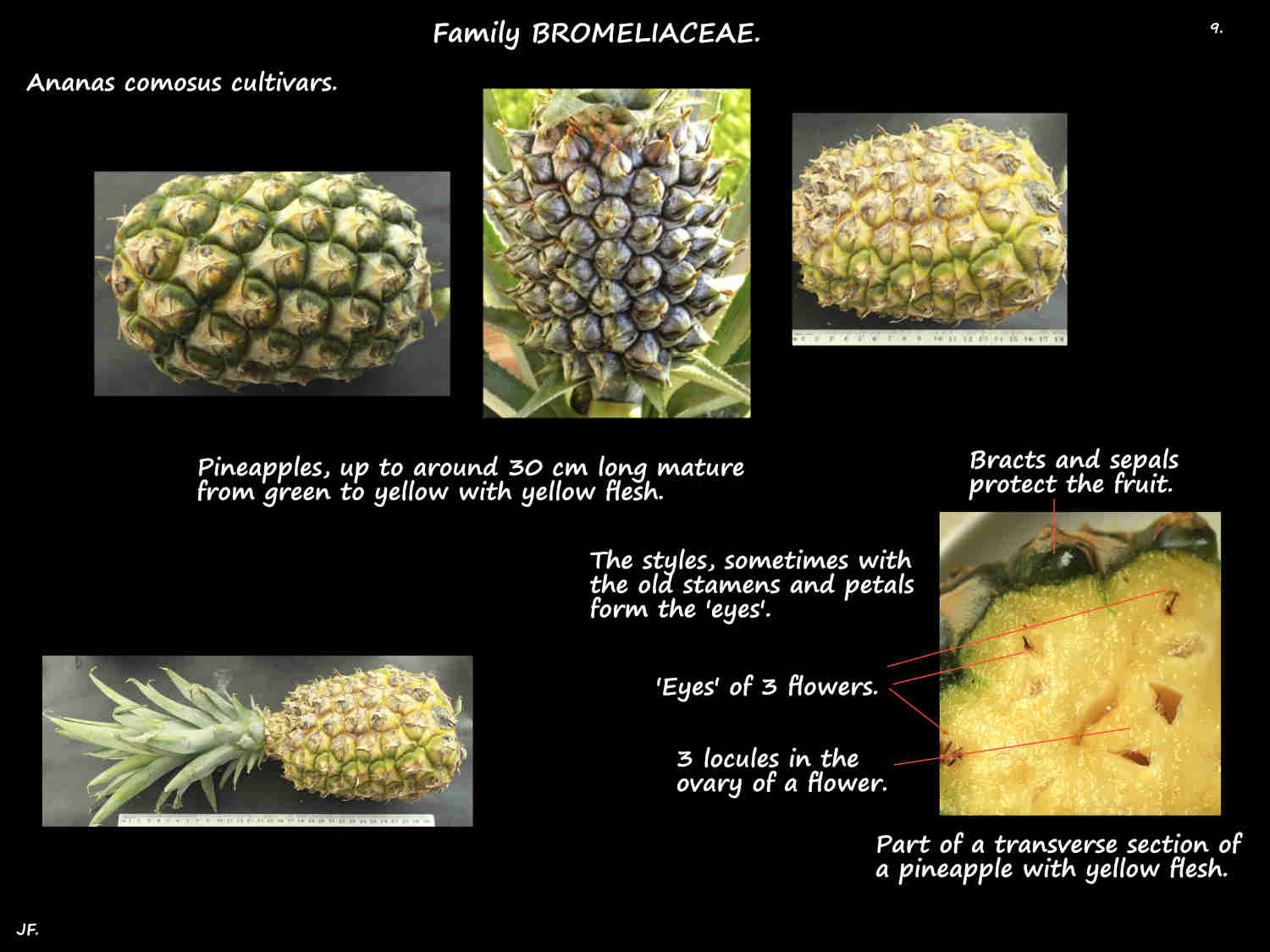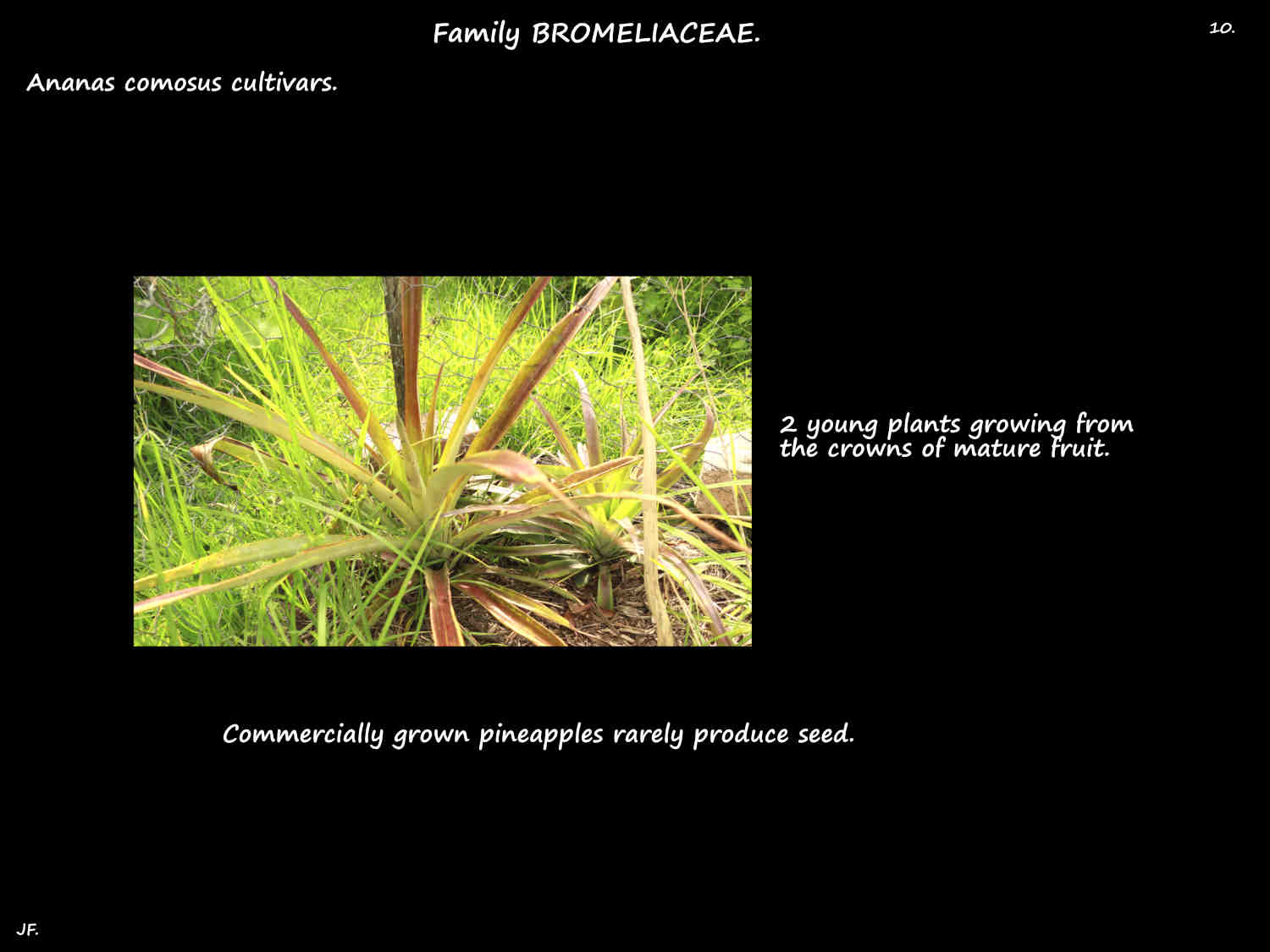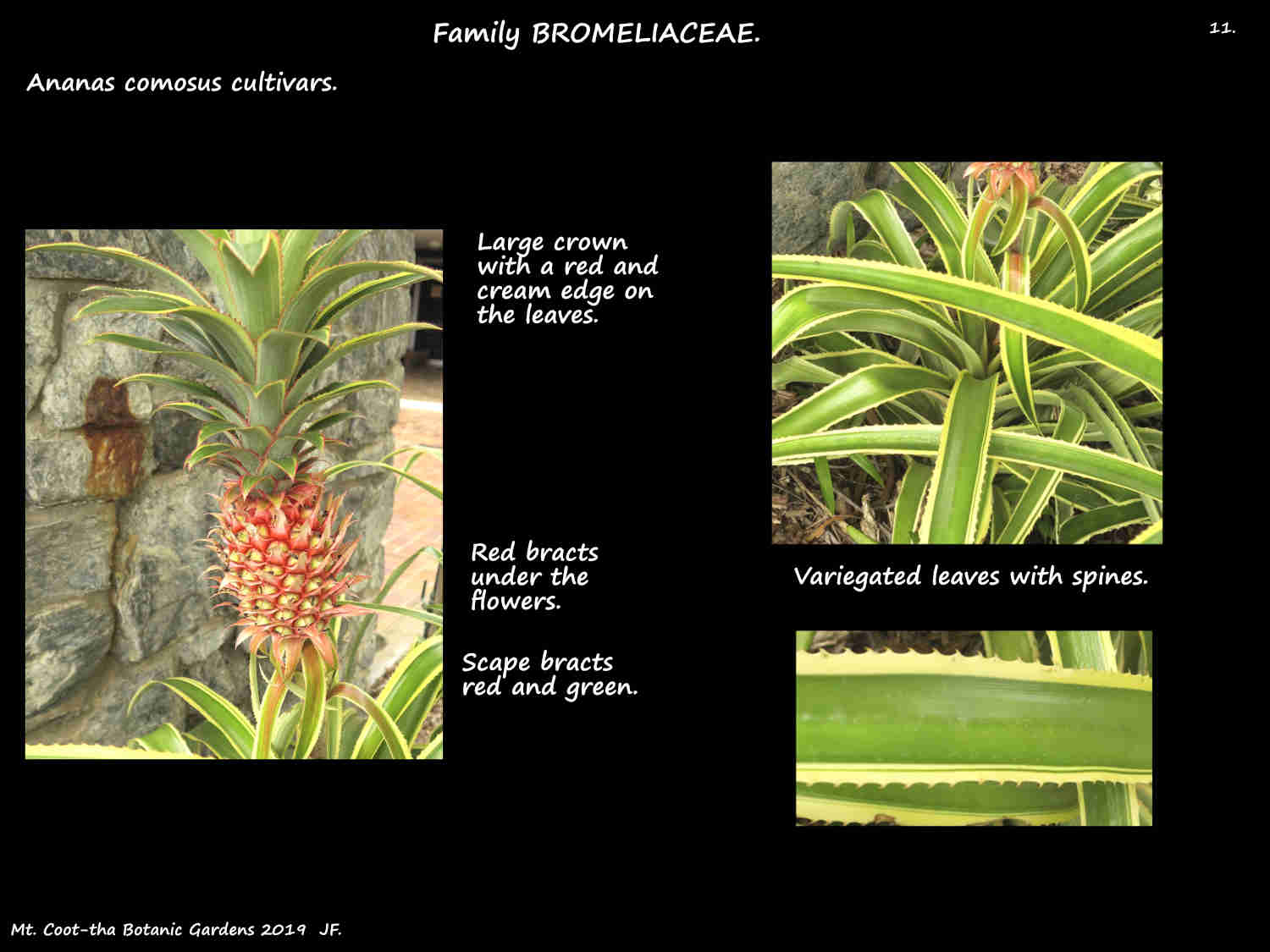Ananas comosus & cultivars. (A. comosus. var. comosus.)
The pineapple, in Family Bromeliaceae > Subfamily Bromelioideae is native to South America.
There are 2 species plus 5 or 6 varieties which are sometimes seen as species and around 30 cultivars that are grown commercially.
A. comosus is a perennial plant 1 to 2 m high and wide that grows as a small terrestrial shrub but occasionally as an epiphyte.
The short thick stem or butt is 25 to 50 cm long.
Fibrous roots grow from the base of the stem and from the lower leaf axils.
Suckers grow from the base of the stem and side shoots from just under the inflorescence.
The tip continues to grow even after the fruit have formed.
When fully grown there are 30 to 80 leaves in a basal rosette.
The narrow leaves, up to 1 m long have a concave upper surface and a spine at the tip.
The base widens into a sheath that goes two thirds of the way around the stem.
The sheath is tight enough for the leaf bases to hold water.
The blade edge can be smooth, spiny all around or just near the tip.
There are white scales or trichomes on both surfaces but mainly the lower.
At 12 to 18 months old a spike-like inflorescence grows from the centre of the basal rosette.
It has a short stalk or peduncle with a few narrow green to reddish bracts.
The stalk continues upwards as the rachis or core with up to 200 spirally arranged flowers on it.
Growth continues above the inflorescence with tightly packed leaves forming a crown.
Flowers, lasting only 1 day open at the base of the inflorescence first.
Flowers have no stem and are partly embedded in the soft tissue around the central core.
The lower part of the floral bract under each flower is fused to the flower.
On the surface the thick overlapping triangular bracts have a long spine.
There are scales on the outer surface mainly near the tip.
Flowers have 3 sepals and petals whose bases fuse to form a short perianth or epigynous tube.
The 3 free fleshy overlapping triangular sepals have a short pointed tip.
The 3 free petals alternate with the sepals.
The long white linear bases form a corolla tube and the slightly broader purplish ends curve outwards.
At the base of each petal are 2 small nectary scales.
There are 6 stamens in 2 whorls with the outer 3 inserting onto the rim of the perianth tube opposite the sepals.
The inner 3 insert onto the base of a petal.
The anthers, lying within the corolla tube open inwards through longitudinal slits.
The inferior ovary, of 3 fused carpels has 3 locules each with numerous ovules attached at the top of the locule.
The single style, longer than the stamens has 3 stigma lobes that are twisted lengthwise but later free.
The nectar tubes from the septal nectaries at the base of the ovary open into the perianth tube.
Mature fruit are pineapples 30 cm or more in length with the crown at the top.
On each flower the floral bract remains as do the 3 tough sepals which fold over tightly to cover the parts underneath.
The petals, stamens and style wither but remain forming the dark ‘eye’ seen when the tough outer ‘skin’ is cut off a pineapple.
The ovary of each fruit develops into a fleshy berry.
The base of each many sided segment ( i.e. flower) is fused to the adjacent ones and all are embedded into the soft tissue around the fibrous core.
All together they form the pineapple which is a syncarp or multiple fruit.
As it ripens the flesh changes from white to yellow and the exterior from green to yellow, yellowish-orange or reddish.
Commercially grown fruit usually do not develop seeds and new plants are grown from the crown or the side shoots below it.
Australia mostly grows the ‘Smooth Cayenne’ cultivar which has no spines on the leaves and various ‘Queen’ cultivars which have leaves with spines.
J.F.
